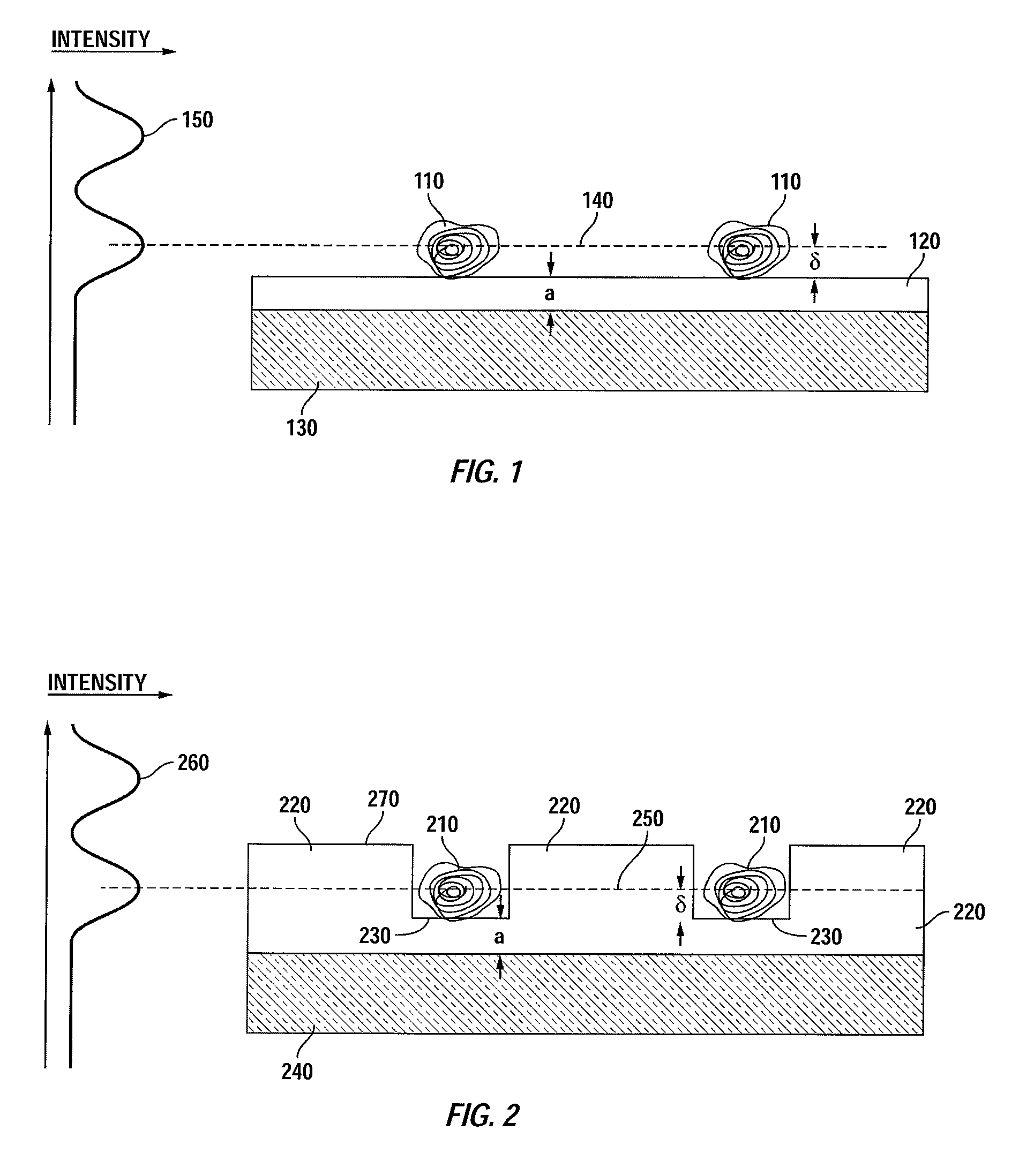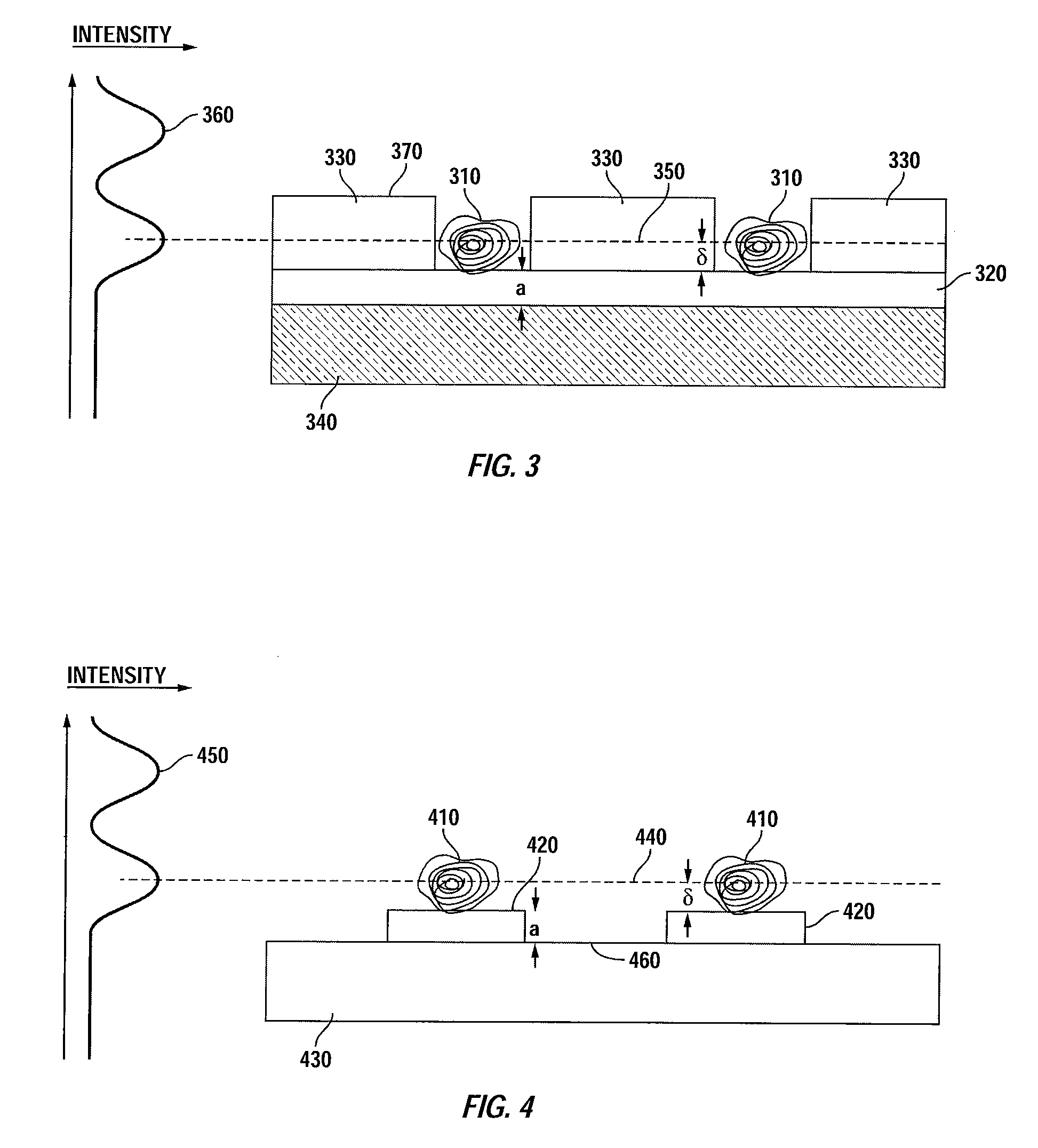Structures for enhanced detection of fluorescence
a fluorescence and structure technology, applied in the field of substrates, can solve the problems of time-consuming and costly manual methods, the structure employed to provide the observation platform fails to take full advantage of the characteristics of fluorescent probes, and the detection of these substrates is not taken into accoun
- Summary
- Abstract
- Description
- Claims
- Application Information
AI Technical Summary
Benefits of technology
Problems solved by technology
Method used
Image
Examples
example 1
Enhancing the Fluorescence Signal from a Labeled DNA: Concatamer Using a SiO2 / Si Substrate
[0070]The following example provides the calculation and construction of a sample substrate optimized to provide detection of fluorophores distributed through a plurality of DNA concatamers comprising approximately 1 Kb of nucleotides in a single-stranded, three dimensional construct attached to a SiO2 / Si substrate. The production of such concatamers is described, for example, in U.S. patent application Ser. No. 11 / 451,691, which is published Patent Application 2007 / 0099208 assigned to the assignee of the present invention.
[0071]For the present example, the finite average size of the DNA concatamers was factored into the calculation of the substrate construction to provide maximal detection of each DNA concatamer.
[0072]FIG. 9 displays a plot of the calculated total enhancement for a silicon substrate coated with a SiO2 layer as a function of the thickness of the oxide film, with a fluorophore-c...
example 2
Enhancing the Fluorescence Signal from a Labeled DNA: Concatamer Using a SiO2 / Al Substrate
[0074]The following example provides the calculation and construction of a sample substrate optimized to provide detection of fluorophores distributed through a plurality of DNA concatamers comprising approximately 1 Kb in a single-stranded, three dimensional construct attached to a SiO2 / Al substrate. For the present example, the finite average size of the DNA concatamers, 60 nm, was factored into the calculation of the substrate construction to provide maximal detection of each DNA concatamer.
[0075]Experimental data was obtained for a SiO2 / Al substrate having a plurality of DNA concatamers comprising multiple Cy3 fluorophores distributed throughout the molecule attached to the substrate surface. As seen in FIG. 11, the maximal fluorescent signal intensity as a function of oxide thickness for such concatamers attached to the surface occurs at a thickness of 45 nm, which was found empirically to...
PUM
| Property | Measurement | Unit |
|---|---|---|
| radius | aaaaa | aaaaa |
| radius | aaaaa | aaaaa |
| thickness | aaaaa | aaaaa |
Abstract
Description
Claims
Application Information
 Login to View More
Login to View More - R&D
- Intellectual Property
- Life Sciences
- Materials
- Tech Scout
- Unparalleled Data Quality
- Higher Quality Content
- 60% Fewer Hallucinations
Browse by: Latest US Patents, China's latest patents, Technical Efficacy Thesaurus, Application Domain, Technology Topic, Popular Technical Reports.
© 2025 PatSnap. All rights reserved.Legal|Privacy policy|Modern Slavery Act Transparency Statement|Sitemap|About US| Contact US: help@patsnap.com



